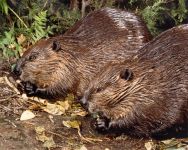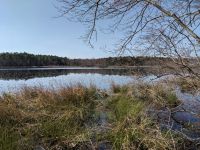


|

|
|
 
|

Spring has arrived at the Refuge and, after having experienced one of the wettest winter seasons we can recall in over 30 years, it is wonderful to see 'life emerging': buds on the trees (photo), turtles coming out of dormancy and much more. The results from all the rain have been spectacular, although not without their challenges as areas that normally would be dry or simply swampy have become flooded. Subsequently, our walkways used to cross moderately wet areas are not only under water, but some have also been largely destroyed by water movement and downed trees. We expect to be busy for some time dealing with this while, at the same time, appreciating that changes in weather and habitat formations bring with them new opportunities for wildlife. We do not want to unnecessarily interfere with what may be the new natural order of things.
Your financial support is crucial for us to continue to look after the Refuge and protect the animals and plants living here. If you have not done so this year, please send us a donation -- any amount will be gratefully received!